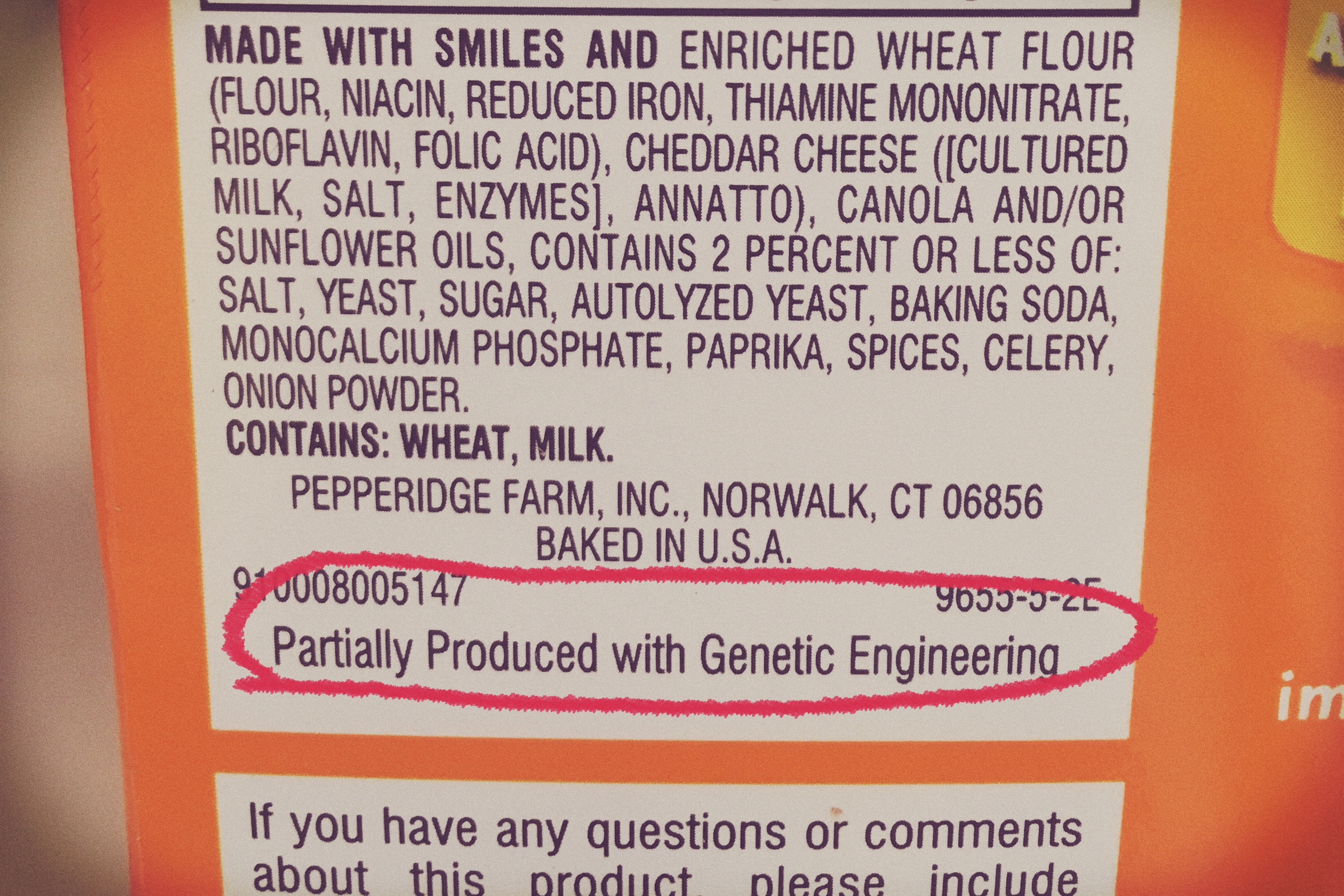“GMO firms are radically changing our food supply and we owe it to ourselves and our families to try to understand what they are doing and why. ” GMO Myths and Truths, Edition 2, John Fagan, PhD, Michael Antoniou, PhD, and Claire Robinson, MPhil
“Roundup Ready©” and Monsanto are not new terms to me.
Growing up in a family of farmers, they were discussed with enthusiasm and promise while I was a young adult in the early ’90’s. I didn’t know what genetic modification was or that this new technology would affect the foods that I would feed my children one day. I merely heard the excitement surrounding this innovation. Many of our farmer friends were grasping at it in hope that it might save their livelihoods in the face of plummeting crop prices and financial ruin.
Fast-forward 25 years, and most of us have probably heard of Roundup (also known as glyphosate pronounced GLY-fo-sate), Monsanto, and genetically modified (GM) foods. These terms don’t just affect farmers anymore. For better or for worse, they are now embedded in our food supply. Most of us eat GM foods and – yes – glyphosate, everyday. We feed them to our children.
In the past, I hadn’t seriously considered genetically modified foods. Honestly, I didn’t realize they were so prevalent in our food supply. Besides, in my simple brain, I had imagined a scientist in a white lab coat tinkering with a single gene in a plant to make the plant somehow “better”. I began to be more concerned as I read and heard more about GMO’s. I wanted to learn how they are created, whether they are safe, and if I should really expend time, money, and effort to avoid them.
The Answers to These Questions are Muddied by Startling Controversy.
The case for and against GM foods is filled with conflicting studies and conclusions, accusations, and emotion. Even brilliant scientists who have decades of study in this area don’t agree whether GM foods are safe. The science overwhelms me.
While I will readily admit that I feel in over my head on this subject, what I have learned has completely shattered my vision of genetic modifications in food. My vision of that scientist inserting a gene into a plant to increase its drought-tolerance or vitamin content has been turned on its head.
10 Facts I Learned About Genetically Modified (GM) Foods
1. Genetic modification is NOT just an extension of the selective breeding process that has been happening for thousands of years.
It’s radically different. Genetic changes in the plant change the nature of every single cell in the entire plant – from root to pollen. Companies market their products to consumers by claiming that the GM process is a natural extension to past selective breeding and hybridization processes. On the other hand, they patent their GM crops as an innovation and claim that they take an “inventive step” in creating them. It is illogical to take both sides of an argument. Which is true?
2. Genetically Modified foods are considered GRAS (Generally Recognized as Safe) by the FDA.
Based on what I found about GRAS additives while researching a recent post, this fact is the most alarming to me. How the FDA could allow GM to be considered Generally Recognized as Safe is outrageous. The GRAS system, an FDA rule, was originally created to define a list of commonly used food additives used prior to 1958, for example, sugar and vinegar. Genetic modification should not be in this same class. It is scientific innovation embedded in our food and deserves full testing and due caution by the FDA. Instead, the FDA has passed on to industry the responsibility of ensuring the safety of our food. Again.
3. I’ve been eating GMOs – probably almost every day – and didn’t know it.
Most soy, corn, cotton, sugar beets, and canola grown in the U.S. are GM. Good luck finding a packaged food in your grocery store – or eating in any restaurant – without a genetically modified food in the ingredient list.
Even though you may not realize it, you probably eat GMOs now. Up to 80% of processed foods in the U.S. have them. WebMD
4. Manufacturers are not required to test genetic modifications for safety – only to show that they are “substantially equivalent” to natural foods.
Since there is no definition of what substantial equivalence means, this undefined requirement has been widely criticized as companies can measure the characteristics that they choose. Manufacturers often cite equivalence in carbohydrate, fat, and/or protein content. But there have been studies that found significant differences in GM vs. non-GM foods in various nutrients, allergens, inhibitors, protein types, and even structure and texture.
5. Genetic modifications can include the insertion of multiple genes – from multiple sources – into the DNA of a plant.
For example, the first of Monsanto’s Roundup Ready © Soybean was embedded with genes from 4 different organisms (two species of soil bacteria, as well as one from a flowering plant, and another from a plant virus).
6. The overwhelming majority of GM foods are modified to tolerate herbicides (primarily glyphosate) and/or to make the plant produce its own insecticide.
For example, a gene from a bacterium, Bacillus thuringiensis (Bt), is almost always added to Roundup Ready © crops. Often used as a spray in organic farming, Bt is a natural bacterium that degrades and washes off before we eat it. However, embedding Bt into a plant turns the entire plant into an insecticide. Bt kills insects by attacking the gut cells of the insect and poking holes in the lining. When Bt is embedded within our food, it cannot be washed off, and we eat it.
7. Genetic modifications affect every cell in the plant – including the pollen.
Take, for example, the Bt modification I described above. Since crops embedded with Bt also create the insecticide in their pollen, pollinating insects like bees and butterflies are affected as well. These insects, which are beneficial to the crop, are affected in the same way as the harmful pests in an unintended consequence.
8. The genetic modifications themselves are not the only concern here.
It is difficult to separate the issue of genetic modification with the liberal, and increasing use, of herbicides that GM crops are designed to withstand. Crops grown to tolerate herbicides are then sprayed heavily with that herbicide to kill weeds. We then breathe it, live in it, and eat it.
9. There are a growing number of scientists and doctors who suspect a link between the sudden increase in autoimmune disease, cancer, and autism and the introduction of GMs into our food supply in the 90’s.
While this is a highly controversial topic, there are animal studies that have suggested problems with GMO’s as well as the associated herbicide, glyphosate. Problems include structural changes in the gut, stomach inflammation, and liver and kidney problems. Glyphosate was originally used as a pipe cleaner because it is a chelator, which means that it binds to metals. There is a hypothesis that it may bind with magnesium, zinc, calcium, and other necessary minerals in our bodies, causing us to excrete them. Patented as an antibiotic in 2010, glyphosate may also be affecting our microbiome. Finally, in 2015, the World Health Organization identified glyphosate as a probable carcinogen.
10. The Non-GMO Project is a non-profit organization that verifies non-GMO foods, grows awareness of GM foods, and advocates for GM labeling.
I’ve been pleased to see an increase in the number of items with the organization’s butterfly logo in my grocery store. As awareness grows, more consumers are communicating – with their food dollars – that they don’t want to eat genetically modified food.
Embedding 4 different genes into a plant to allow it to survive liberal spraying of a carcinogenic herbicide is not how I envisioned genetic modification.
Based on my limited research on the topic, I’ve decided that I’m uncomfortable eating Monsanto’s inventions.
While it’s easy to become discouraged as we learn about these adulterated foods and come face to face with the fact that we have already been eating them for years, we are not called to a spirit of fear (2 Timothy 1:7). We ARE called to persist, to persevere, and to not give up.
Let us not become weary in doing good, for at the proper time we will reap a harvest if we do not give up. Galatians 6:9
The Non-GMO Project is very encouraging to me, as is the increasing awareness of unnatural foods in general and specifically GMO’s. Just last night in the grocery store, I spied the butterfly on packages of Domino Sugar ™!
The good news is that avoiding packaged foods will go a long way toward avoiding GMO’s.
There are only a few items in the produce department that are possibly GM. By buying organic versions of these, we can avoid the genetic modifications in our fresh fruits and veggies:
- Edamame
- Papayas from Hawaii
- Summer squash
- Sweet corn
- Zucchini
- Potatoes
- Apples (the Arctic Apple™ is GM)
What are some more ways to avoid GM foods?
While I certainly won’t be able to avoid GMO foods altogether, I am planning to make imperfect progress in increasing the number of foods we eat that are not genetically modified and do my best to keep GMO’s out of my kitchen. These actions may look very familiar; they are many of the same things we can do to avoid GRAS additives.
- Shop the perimeter of the store and buy organic – especially the dirty dozen – as much as possible
- Look for the Non-GMO Project butterfly logo when buying a packaged food
- Plant non-GMO seeds when gardening
- Eat more vegetables and fruits
I hope that you have learned something new from what I discovered about genetically modified foods and that you will be encouraged to seek out more information and take your own stance on GM foods.
What do you think? Have you given much thought to GM foods? Do you avoid GM’s or do you believe that they are safe to eat? Leave a comment and let me know!
Sources:
WebMd on GMO’s – https://www.webmd.com/food-recipes/features/truth-about-gmos#7
Non GMO project: The Truth about GMO’s – http://livingnongmo.org/wp-content/uploads/2014/11/GMO-Myths-and-Truths-edition2.pdf
What’s Making Our Children Sick? How Industrial Food is Causing an Epidemic of Chronic Illness, and What Parents (and Doctors) Can Do About It by Michelle Perry, MD and Vincanne Adams, PhD – https://amzn.to/2HgGpu9






